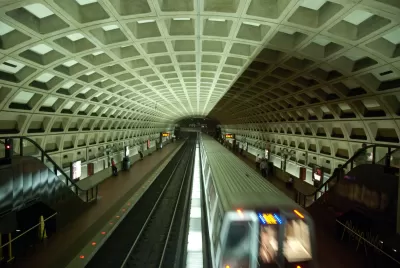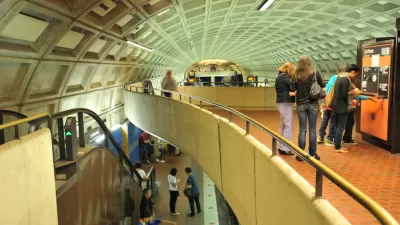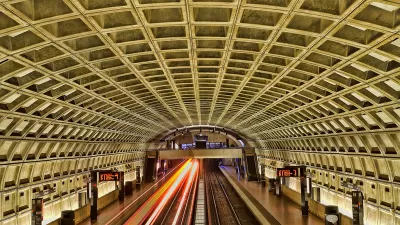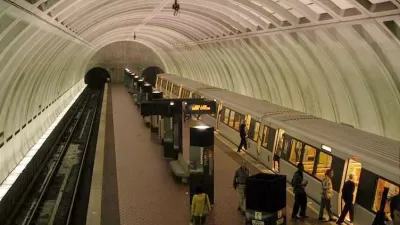A decrease in ridership is not disputed. However, ideas about the best solutions for turning things around abound.

Faiz Siddiqui reports on the ridership challenges Metro is facing in the Washington, D.C. area. The system is grappling with a ridership decrease averaging 125,000 daily riders over the last 10 years. Younger riders, ages 18 to 29 in particular, are using other modes and riding less on the weekends.
Paul J. Wiedefeld, Metro's general manager, ties ridership declines to factors outside the system, including lower fuel prices and telecommuting. However, one study pointed to service as the primary issue driving people away from Metro.
More than a year after Metro cut late-night service and reduced the frequency of trains on five of six lines amid chronic safety and reliability problems, ridership has plunged to 2001 levels. Now that the agency has secured $500 million a year in dedicated funding for capital needs, riders and their advocates say it's time to shift the focus to restoring some of that service to win back customers.
But Metro board members do not agree about which service improvements the agency should pursue. Some feel that restoring late-night and off-peak service should be the focus. Others believe the problem is reliability and increased headways, particularly at night. Still others say competition from ride-hailing services is the big concern and have proposed requesting more funding from local jurisdictions to subsidize service.
FULL STORY: When it comes to reversing the ridership slide, Metro’s leaders don’t have a plan

Study: Maui’s Plan to Convert Vacation Rentals to Long-Term Housing Could Cause Nearly $1 Billion Economic Loss
The plan would reduce visitor accommodation by 25,% resulting in 1,900 jobs lost.

North Texas Transit Leaders Tout Benefits of TOD for Growing Region
At a summit focused on transit-oriented development, policymakers discussed how North Texas’ expanded light rail system can serve as a tool for economic growth.

Using Old Oil and Gas Wells for Green Energy Storage
Penn State researchers have found that repurposing abandoned oil and gas wells for geothermal-assisted compressed-air energy storage can boost efficiency, reduce environmental risks, and support clean energy and job transitions.

From Blight to Benefit: Early Results From California’s Equitable Cleanup Program
The Equitable Community Revitalization Grant (ECRG) program is reshaping brownfield redevelopment by prioritizing projects in low-income and environmental justice communities, emphasizing equity, transparency, and community benefits.

Planting Relief: Tackling Las Vegas Heat One Tree at a Time
Nevada Plants, a Las Vegas-based nonprofit, is combating the city’s extreme urban heat by giving away trees to residents in underserved neighborhoods, promoting shade, sustainability, and community health.

How Madison’s Tree Planting Efforts Are Growing a Healthier Community
Madison’s annual tree planting initiative is enhancing environmental resilience, public health, and community livability by adding 1,400 carefully selected trees citywide, with strong community and institutional support for urban forestry.
Urban Design for Planners 1: Software Tools
This six-course series explores essential urban design concepts using open source software and equips planners with the tools they need to participate fully in the urban design process.
Planning for Universal Design
Learn the tools for implementing Universal Design in planning regulations.
Ascent Environmental
Borough of Carlisle
Institute for Housing and Urban Development Studies (IHS)
City of Grandview
Harvard GSD Executive Education
Toledo-Lucas County Plan Commissions
Salt Lake City
NYU Wagner Graduate School of Public Service





























